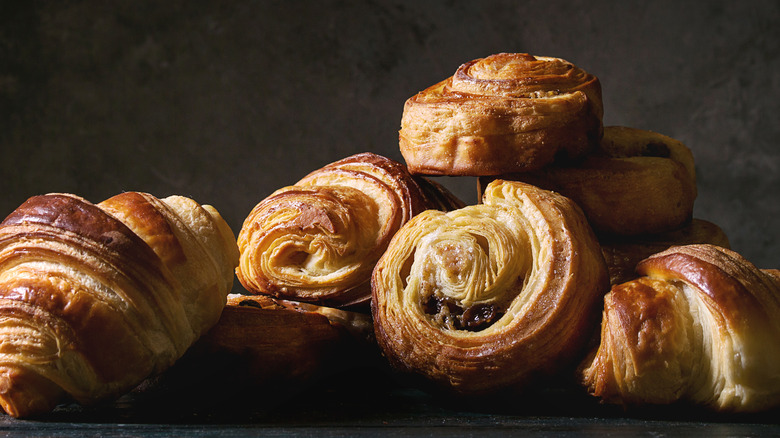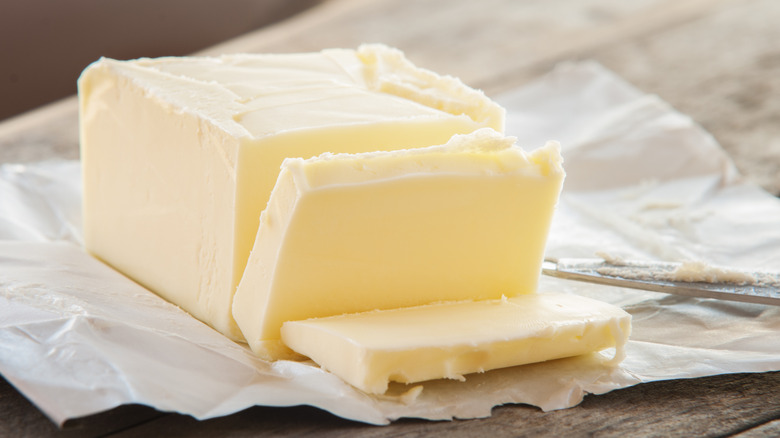Why You Should Always Use All-Butter Puff Pastry
We hate to break it to you, but not all puff pastry is created equal. Though many versions consist of laminating dough with butter, sometimes, the pastry can be made with vegetable oils (or shortening) instead — which may not give you exactly the results you want in your favorite recipes featuring puff pastry. While you could take matters into your own hands and craft your own dough to ensure a buttery base, the process can be lengthy, so rather than undergo a series of rolling and folding maneuvers, save yourself the hassle and opt for store-bought.
Most packages of butter-based puff pastry will proudly advertise an "all-butter" label on the box, but you can also scan the ingredient list to verify these claims. Essentially, this type of puff pastry will have no other fats added to the dough aside from butter. Why is an all-butter recipe so important? The simple answer is that butter makes everything better. Since fat is equivalent to flavor, it can impart a delicious and complex richness that's pretty hard to compete with.
What's more, butter improves texture. Due to its unique fat content, it produces a more tender, flaky pastry; the water it contains converts to steam during baking and pushes the dough apart into a surplus of feathery layers. As far as mouthfeel goes, the fat is also responsible for giving puff pastry a light, melt-in-your-mouth quality that's far from waxy or oily, which can sometimes arise from puff pastry containing shortening instead.
All-butter puff pastry pays off in more ways than one
Along with improving flavor and texture, butter-based puff pastry can even be a more practical choice. Since butter is soft and pliable, pastry made with this forgiving ingredient instead of shortening tends to be a bit easier to work with because it's less likely to tear. However, just because an all-butter formula isn't as fragile as other puff pastries doesn't mean that it shouldn't also be treated delicately.
To avoid tearing, there are a few steps you can take to properly handle the pastry. For example, thaw the pastry correctly — either overnight in the fridge or for half an hour on the counter — to make sure it's malleable enough to use, but not super tacky so that it sticks to surfaces. Additionally, lightly dusting your work area with flour and gently working the dough can also prevent rips and ensure it puffs up as intended.
From pot pie toppers to Wellington wrappers, buttery palmiers to fruity turnovers, and impromptu tarts, using all-butter puff pastry is an effortless way to guarantee the flakiest, most decadent result. Why settle for anything less?

